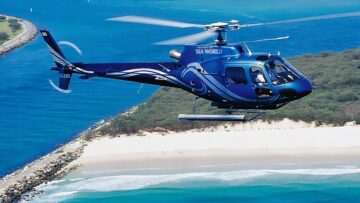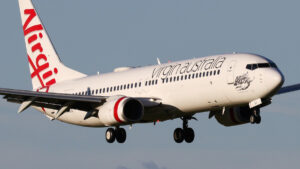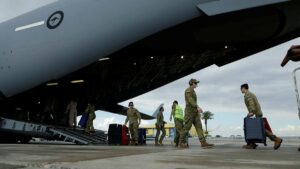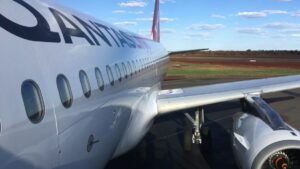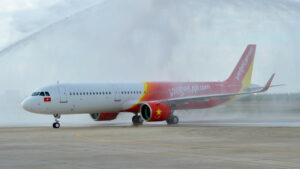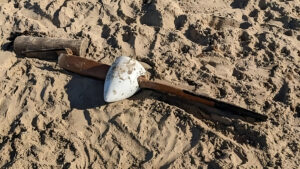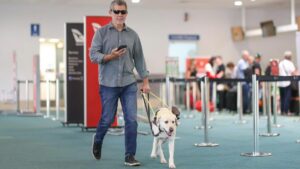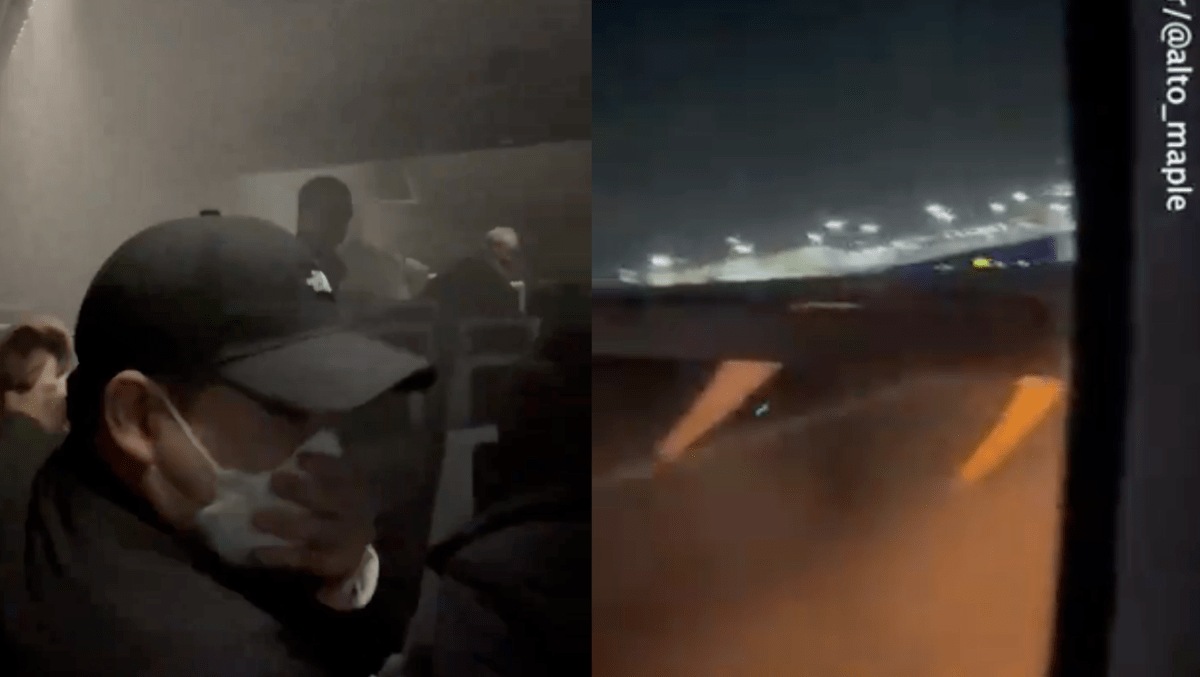
The Japanese coastguard Dash 8 that collided with an A350 in Tokyo this week did not have permission to take-off, the country’s transport ministry has claimed.
The apparent revelation contained in transcripts of air traffic control recordings seemingly contradicts the views of the pilot of the smaller aircraft.
It comes after the Japan Airlines A350 burst into flames at Haneda Airport on Tuesday. All 379 passengers and crew, including 12 Australians, survived, but five onboard the Dash 8 died – with only the captain escaping alive.
On Wednesday, Toshiyuki Onuma, from Japan’s Civil Aviation Bureau, told a press conference that communications showed “nothing that can be regarded as permission to enter the runway”.
Suasana kabin yang direkam salah satu penumpang @alto_maple pic.twitter.com/yCg7VSbICJ
— Komunitas Indoflyer (@indoflyer) January 2, 2024
Air traffic controllers, it’s alleged, told the JAL A350-900 it was cleared to land, and the pilot read back the instruction.
The Dash 8’s captain, meanwhile, repeated a communication to “taxi to holding point C5”, a position where it would then await permission to enter the runway.
The turboprop, flying on behalf of the coastguard to aid victims of the recent New Year’s Day earthquake, entered runway 34R before a collision with the larger Airbus widebody.
Former JAL pilot Hiroyuki Kobayashi told the media, “There’s a strong possibility there was a human error.
“Aircraft accidents very rarely occur due to a single problem, so I think that this time too there were two or three issues that led to the accident.”
Someone just forwarded this @alto_maple video of the Haneda, Japan @airbus A350 fire from inside the plane.
All 379 people on board evacuated safely but 5 were killed in the Dash 8 aircraft they collided with.
Earthquake, tsunami and a plane fire – a rough 2024 for Japan. 🙏 pic.twitter.com/Fxl862xbs9
— Tarun Shukla (@shukla_tarun) January 2, 2024
The Japan Transport Safety Board has subsequently retrieved the voice recorders of the Dash 8 but is still searching for the same items from the A350. Reports also state the Tokyo Metropolitan Police Department is now probing the incident on suspicion of professional negligence.
The A350-900 was flying from Shin Chitose airport, near Sapporo, into the Japanese capital when initial reports suggested a bang was heard as it “approached the runway”.
The aircraft quickly became engulfed in flames and smoke, but the quick-thinking cabin crew evacuated all on board via the emergency exit slides. In total, just 14 passengers and crew sustained minor injuries.
Passenger Anton Deibe, 17, told Swedish newspaper Aftonbladet that “the entire cabin was filled with smoke within a few minutes”.
“We threw ourselves down on the floor,” he said. “Then the emergency doors were opened, and we threw ourselves at them.
“The smoke in the cabin stung like hell. It was hell. We have no idea where we are going so we just run out into the field. It was chaos.”
The resulting explosion was so severe the fuselage broke in two and burned on the runway for more than two hours after the evacuation.
The crash was the first involving Airbus’ next-generation A350, which is more fuel-efficient than traditional long-haul aircraft and is constructed from advanced materials such as carbon fibre-reinforced plastic.
Qantas has ordered 12 A350s to replace the bulk of its ageing A330 fleet, alongside a separate order for 12 specially adapted A350-1000 jets to launch Project Sunrise.
The aircraft that exploded, JA13XJ, was just two years old and mostly flew domestically across Japan.
Immediately after the incident, all four runways at Haneda were closed, with flights diverted to local airports. The three unaffected runways reopened in the early hours of the morning.
Japan Airlines said in a statement, “Our thoughts and prayers are with the deceased members of the Japan Coast Guard.”
- SEO Powered Content & PR Distribution. Get Amplified Today.
- PlatoData.Network Vertical Generative Ai. Empower Yourself. Access Here.
- PlatoAiStream. Web3 Intelligence. Knowledge Amplified. Access Here.
- PlatoESG. Carbon, CleanTech, Energy, Environment, Solar, Waste Management. Access Here.
- PlatoHealth. Biotech and Clinical Trials Intelligence. Access Here.
- Source: https://australianaviation.com.au/2024/01/tokyo-crash-dash-8-not-cleared-for-take-off-authorities-claim/
- :has
- :is
- :not
- :where
- 12
- 13
- 14
- 17
- 2024
- 8
- a
- accident
- accidents
- across
- advanced
- Advanced materials
- After
- Aid
- AIR
- Airbus
- aircraft
- Airlines
- airport
- Airports
- alive
- All
- all on board
- alleged
- alongside
- also
- an
- and
- apparent
- ARE
- AS
- At
- Authorities
- aviation
- await
- back
- bbc
- BE
- became
- before
- behalf
- board
- Broke
- Bureau
- burned
- but
- CAN
- capital
- carbon
- Chaos
- civil
- claim
- claimed
- closed
- CO
- Coast
- collision
- COM
- comes
- Communications
- Conference
- contained
- control
- country’s
- Crash
- crew
- Dash
- day
- deceased
- Department
- DID
- died
- domestically
- doors
- down
- due
- Early
- Earthquake
- emergency
- Enter
- entered
- Entire
- error
- Exit
- explosion
- few
- field
- filled
- Fire
- First
- five
- FLEET
- Flights
- Floor
- flying
- For
- four
- from
- going
- Guard
- Have
- he
- heard
- holding
- HOURS
- HTTPS
- human
- i
- idea
- in
- incident
- initial
- inside
- into
- involving
- issues
- IT
- items
- ITS
- Japan
- Japan’s
- Japanese
- just
- Land
- larger
- launch
- Led
- like
- local
- materials
- Meanwhile
- Media
- Members
- Metropolitan Police
- ministry
- minor
- more
- morning
- mostly
- Near
- New
- next-generation
- no
- now
- occur
- of
- Old
- on
- Onboard
- only
- opened
- or
- order
- ourselves
- out
- People
- permission
- pilot
- plane
- plastic
- plato
- Plato Data Intelligence
- PlatoData
- Point
- Police
- position
- possibility
- press
- Problem
- professional
- project
- quickly
- rarely
- Read
- recent
- regarded
- replace
- Reports
- resulting
- revelation
- Run
- runway
- safely
- Safety
- Said
- same
- searching
- separate
- severe
- showed
- single
- Slides
- smaller
- Smoke
- So
- specially
- State
- Statement
- Still
- strong
- Subsequently
- such
- Survived
- sustained
- Swedish
- Tarun
- than
- that
- The
- the cabin
- Them
- then
- There.
- they
- think
- this
- this week
- three
- time
- to
- tokyo
- told
- too
- Total
- traditional
- traffic
- transport
- Tsunami
- Tuesday
- two
- unaffected
- very
- via
- victims
- Video
- views
- Voice
- was
- we
- Wednesday
- week
- were
- when
- which
- with
- within
- would
- years
- zephyrnet

